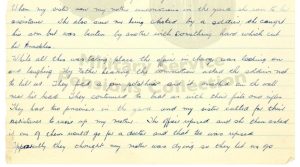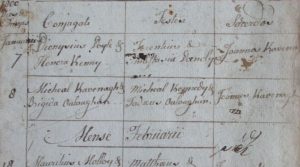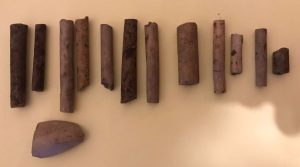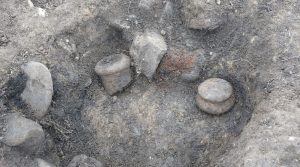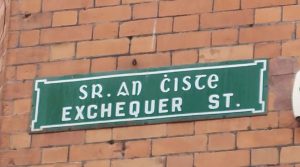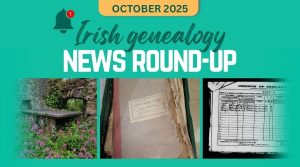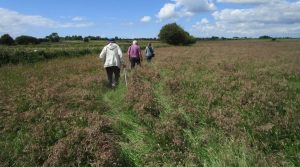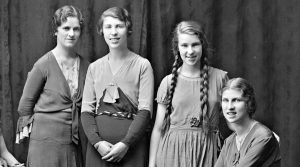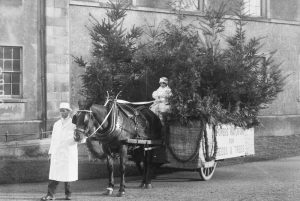By Dr Rachel Finnegan
Author Rachel Finnegan’s latest publication, Memories of Gentry Houses in Skibbereen and Douglas, County Cork, brings to life the stories of two “big houses” in the 19th and early 20th centuries. Focusing in particular on the female occupants – the Fleming sisters and their mother, their unconventional maiden aunts and the hired staff – the book vividly captures the daily rhythms, family dynamics and strong personalities that shaped these homes.
In the summer of 2024, I brought out a biography of Judith Isobel Chavasse née Fleming (1867–1935), based on her diaries and other documents – which you can read about here.
>>> RELATED: Charting Judith Chavasse’s life in West Cork and Waterford through her diaries and memoirs
New book: Memories of Gentry Houses
Last winter, finding myself reluctant to let go of this fascinating subject quite so soon, I decided to produce an edition of the four memoirs written by three of the Fleming sisters – Judith Chavasse, Sue Fitzgerald and Hats Haythornthwaite – concerning the two houses central to their early years.
Sign up to our newsletter
The first was New Court House, just outside Skibbereen, the ancestral home of the Fleming family, where the sisters lived from early infancy until they left to marry. The second was Tramore House in Douglas, where their mother, Elizabeth (Lizzie) Fleming née Reeves, had been brought up and where they had spent all their summer and other holidays for as long as they could remember.
Women of the house
What comes across very strongly in all the memoirs is the strength of character of the female inhabitants of both houses, whether family members or servants. At New Court, for example, there was Mamie Camier, the Fleming sisters’ devoted nurse, who was recalled by two of the memoirists as being quite stubborn and often unsympathetic to the whims of her young charges. However, this did not stop them keeping in touch with her until her death at 95 or sending her photographs of themselves and their children for many years, which have been preserved in a small collection by her descendants.

There was also the girls’ maiden aunt, Elizabeth Lionella Joanna Fleming, otherwise known as “Aunt Nin”, who seemed to show more interest in them than their own mother. She tried to discipline them and always tucked them up in bed when their parents had guests.
Once the girls had got past the age of governesses, most of whom they considered to be utterly useless, their parents had the good sense to give their daughters a role in the running of New Court, for which they were paid. One was in charge of the dairy, another of the fruit and vegetables, another of the laundry and another of dusting, flower arranging and watering the greenhouses. In addition, each girl was required to take part in religious duties such as taking Sunday school classes and working for the parish library.
A D V E R T I S E M E N T
These tasks were assigned not only to make them useful as potential wives, so that they would have a good sense of household management when running their own homes, but also to keep them occupied and presumably out of mischief until they found husbands.
As described in the memoirs, the Fleming girls were often wilful and disobedient, being fond of teasing the servants and playing tricks on innocent visitors. Bess Somerville-Large (who had died before the memoirs were written), the eldest sister, was the worst and most rebellious of the four.
The Reeves sisters
As she grew older, the memoirists’ mother, Lizzie Fleming, appears to have spent as little time as possible at New Court. This was especially the case during the illness and after the eventual death of her husband, Becher Lionel Fleming. He had convalesced at the Hydro in Blarney for a considerable amount of time and died a few minutes before midnight on New Year’s Eve in 1889. According to her daughters’ accounts, Lizzie was an erratic housekeeper. Whether she was simply disinterested or bored with domestic life is unclear, but she seems to have found solace at her childhood home of Tramore, where she spent increasingly more time with her three unmarried sisters, Susanna (Aunt Sue), Henrietta (Aunt Henny) and Mary Reeves.

The Reeves sisters were extremely wealthy, having inherited a fortune on the death of their father, Thomas Somerville Reeves, in 1868. Their inheritance included large stretches of land and numerous properties around Cork city.
However, the conditions of his will were such that to benefit they must remain unmarried and in residence at the family home of Tramore. Although the three continued to receive regular proposals of marriage until late in life, they refused them all, preferring their simple yet presumably fulfilling existence in Tramore.

Their lives there were taken up with good works not only for the general community and to encourage employment, but also for the local parish, especially in the embellishment and upkeep of St Luke’s Church of Ireland church, located about half a mile southeast of Tramore. While many of their philanthropic endeavours ultimately failed, such as introducing cottage industries for making silk and tweed, others succeeded, such as the introduction of several industrial and agricultural associations and exhibitions that survived long after their demise.
In Douglas, the Reeves sisters are best known for their tireless work in fundraising for the tower and spire of St Luke’s Church, the purchase of the organ and the donation of other ornaments and “parochial objects” to the building, such as three commemorative stained-glass windows, a decorative oak panel portraying Queen Victoria on the occasion of her death and a large, carved walnut panel depicting Leonardo’s Last Supper. Mary Reeves, who outlived her other unmarried sisters and died in 1906, commissioned Italian sculptor Professor Arturo Guidi to execute the latter two artworks. While all these attributes are recorded in the archives of the RCB Library in Dublin, they are also noted with pride in the memoirs of their nieces.
What is not described in any other sources are the individual personalities of the Reeves sisters: the gentle nature of Aunt Sue, who was a wonderful musician and filled Tramore with music; the unpredictable and at times irascible character of Aunt Henny, who was nevertheless the best loved, especially by the servants, who found her amusing; and the entrepreneurial and artistic spirit of Aunt Mary, whose paintings fetched high prices in exhibitions held around Ireland and in London, and who was, in all respects, larger than life.
Please help support
Irish Heritage News
A small independent start-up in West Cork
Give as little as €2
Thank You
The memoirists tell amusing anecdotes about how their aunts tried, without success, to teach them the art of deportment or polite conversation, when young girls. They also share funny stories of their aunts’ innocence and of their eccentric behaviour. This is one recalled by Judith:
“In summer there were large garden parties, croquet and tennis. On one of these occasions Aunt Mary having sent out her invitations and got all her acceptances, the day before the party, drove in the landau to Cork to buy provisions, Aunt Sue went for a quiet donkey drive and Aunt Henny put on her oldest clothes and went to the garden. Soon, out came James to say there were ladies within in the drawing-room and she, wondering who they could be, for everyone was coming [the] next day, went in as she was, to find some of the next day’s guests, beautifully dressed, in the drawing room. She wondered, but talked to them. Soon, another carriage drove to the door and more of the next day’s guests arrived, and another and another till the room was full. Aunt Henny did not know what to do, tea and everything was locked up and Aunt Mary had the keys. She talked on and soon the guests began to look at each other and whisper, then one ordered her carriage and another and another till they all melted away. Aunt Mary, returning from Cork, beaming with thoughts of tomorrow’s party and the grand food she had provided, the carriages piled with boxes of cakes, peaches, grapes, pineapples and melons, was met on the Douglas road, by a stream of her next day’s guests and wondered where the party had been and why she was not invited, till she turned in at Tramore gate and there encountered more carriages when the awful truth burst upon her that she had mistaken the day!”
Earlier generations
The Fleming sisters not only record in their memoirs what they remembered of life at Tramore in the time of their Reeves aunts, but they also repeat details of what they had been told by their mother of life at Tramore in her time, and further back. They describe, for example, the chaotic, extravagant and “godless” lifestyle of their maternal great-grandparents, wealthy businessman Isaac Morgan and his wife Rebecca, many of whose children died in tragic circumstances.
In contrast was the devout and austere lifestyle of their grandparents, Thomas Somerville Reeves and his wife Rebecca, who built Tramore in 1818. Such details are substantiated in other family records, such as a memoir written by Thomas in 1854 about his poor and neglected early life, or what I refer to as his wife’s “Religious Year Book”.
In addition to the annotated transcripts of the four memoirs (two on New Court and two on Tramore), my latest book, entitled Memories of Gentry Houses in Skibbereen and Douglas, County Cork, contains a substantial introduction with background information on the three memoirists, the two houses and their successive owners, as well as sources and illustrations.
Book launch
The book is to be launched during Heritage Week, on Saturday, 16 August from 6.30–8.30pm in St Luke’s Church of Ireland church, Douglas. The launch will be preceded by an illustrated talk and followed by a tour of the church and churchyard. See here for further details.

Pick up your copy
Copies of the book can be purchased in local bookshops (Bookstation, Douglas and Blackpool, Cork; Fields (SuperValu) and Cathal O’Donovan’s Bookshop, Skibbereen) or direct from my website here. RRP: €15.00.
Dr Rachel Finnegan has published eight books on 18th-century travel tourism, including a series of three volumes of Rev. Richard Pococke’s letters from abroad, as well as three books on other historical subjects. She is an academic editor by profession and lives in Co. Kilkenny with her husband and three adult sons.
READ NOW
➤ Cork doctor’s reflections on service in North Africa and Italy during World War 2
➤ Life’s unexpected turns for the Mayo-born Margaret Martin who almost boarded the Titanic
➤ Tracing the legacy of the historic mansions of Barryroe parish and their occupants
➤ Curtains up: a nostalgic look at Cork’s old opera house and the Harold Pinter connection
➤ Frances Sheridan: Ireland’s pioneering woman writer
A D V E R T I S E M E N T



